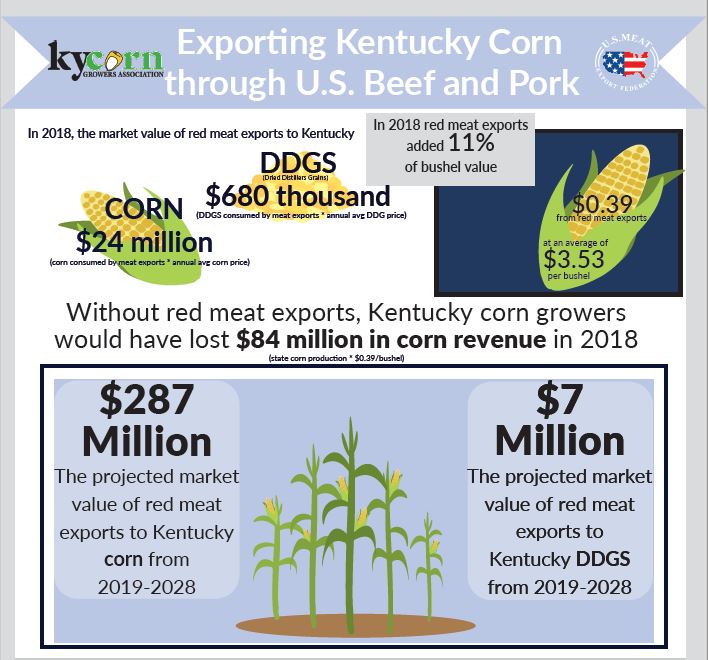Livestock feed
Corn farmers and livestock producers have enjoyed a mutually beneficial and synergistic relationship since the very beginnings of animal agriculture in the United States. Livestock and poultry producers have come to rely on the corn industry as a top source of high quality, nutritional feed. In turn, corn growers have long depended on the livestock and poultry sector as its number one customer.
In Kentucky, about 70 million bushels of corn produced are fed to our livestock. Poultry alone consume 25-30% of the corn produced in the Commonwealth. Nationally, about 40 percent of total corn production goes to feed livestock annually. This equates to more than 5 billion bushels per year feeding livestock and poultry.
While the increase in ethanol and bourbon production shows the feed “piece of the pie” growing slightly smaller each year when looking at U.S. corn usage by segment, corn farmers are still supplying the same 5+ billion bushels to the livestock industry. We are just growing more corn, and the increased supply is going into one of Kentucky’s signature industries – bourbon and into the ethanol industry, reducing our dependence on foreign oil.
The added benefit of both bourbon and the ethanol production to the livestock industry is that distillers grains and feed grade corn oil are produced from the dry mill distillation process, which provides additional, less-expensive, higher-protein and fat feed sources for livestock producers.
Increasing Corn Value through Red Meat Exports
Beef and pork exports added 39 cents per bushel to the price of corn in 2018, according to the latest report by World Perspectives, Inc. (WPI). Over the past three years, WPI has analyzed the impact of U.S. red meat exports on the value of domestic feedgrains and oilseeds







